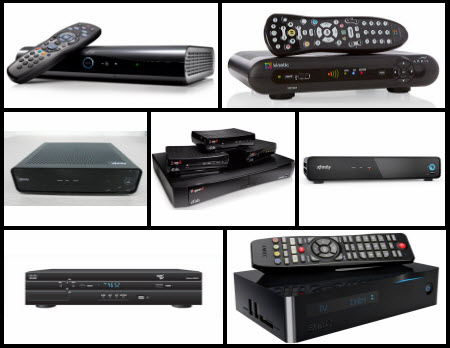‘Unlocking’ the Box Brings Uncertainty

A proposed set of new set-top rules might not necessarily set the stage for a new (and much more vibrant) retail era for video devices that can support pay TV services from cable operators, telcos and satellite providers alike.
Though there’s still much work to be done, it’s crystal clear that Federal Communications Commission chairman Tom Wheeler and backers of the rules, such as Google, firmly believe that new regulations will open the retail floodgates.
On the other end, the cable industry, led by the National Cable & Telecommunications Association, claims that the market for retail video devices is doing just fi ne on its own, free of mandates and driven by an apps-based economy.
As for the retail device makers, Google, which is still trying to establish Android TV’s market presence, has been successful with the Chromecast streaming adapter. The $35 device accounted for 35% of the 42 million streaming devices shipped last year, followed by Apple TV, Roku devices and Amazon’s Fire TV products, according to Strategy Analytics.
Of that group, Roku is in trials with Time Warner Cable and Charter Communications on IP-based pay TV offerings that rely on retail streaming devices.
Comcast, meanwhile, has pushed its own leased products harder than ever — with about 40,000 X1 boxes being deployed per day at last count — as the MSO continues to accelerate the rollout of its next-generation video product, aiming to deploy it to about half of its video base by year-end.
But the new rules, if they come to pass, aren’t exactly trying to leap over the highest of bars.
Multichannel Newsletter
The smarter way to stay on top of the multichannel video marketplace. Sign up below.
By the National Cable & Telecommunications Association’s last count, the nation’s nine largest incumbent cable operators had deployed 55 million operator-supplied set-tops with CableCards, versus just 589,000 of the security modules in TiVo boxes and other devices sold at retail.
Industry observers and a CE company that’s been close to the retail set-top mix since the early CableCard days say it’s too early to know if the FCC’s new proposed rules will have a meaningful impact, given that they could change during the comment process and will require new standards. Plus, the FCC anticipates a two-year compliance window.
“This is going to take a long time to hash through — not only to set the technical standards, but to see if anything actually happens [amid] coming changes at the administration, and possible changes of the chairman and other members of the FCC,” Mike Paxton, senior analyst at SNL Kagan, said.
Assuming the rules are executed, Paxton doesn’t believe that they’ll have as big of an impact as Wheeler and others who desire a successor to the CableCard expect.
“Our feeling is this is only going to have a modest impact at most on how consumers access … and consume video,” Paxton said. “This is by no means a slam dunk … that millions of consumers in the U.S. are going to go out and do this.”
TiVo has championed the retail distribution model, but it’s had limited success in that area since the original CableCard rules took effect almost a decade ago. Of TiVo’s 6.8 million subs, 5.47 million come way of cable-operator partnerships.
“I think it’s too early to make a guess right now” with respect to the impact of the FCC’s rules, Matthew Zinn, TiVo’s senior vice president, general counsel and chief privacy officer, said. “I think things will change during the comment process.”
TiVo has plenty of questions about the rules, but it also has a goal in mind: “We are looking for something that is workable.”
By that, Zinn means a successor to the CableCard that uses standards, but doesn’t require TiVo and others to adhere to an excessive number of technical approaches.
A major challenge is for the FCC to balance MVPDs’ desire for flexibility while assembling standards with which to build a vibrant retail ecosystem that enables device portability across different pay TV operators, he said.
The FCC’s rules will aim directly at incumbent suppliers with plenty of turf to protect. The global set-top business is fragmented, with Technicolor, Arris, Huawei, Skyworth and Pace comprising 40% of the market, at the end of 2014, according to SNL Kagan (it hasn’t released 2015 market share data yet). Arris, which acquired U.K.-based Pace in January, is now the largest set-top box maker in the world and has a dominant position in the U.S., so it has the most to lose.
But it isn’t losing a lot of sleep — yet. “We’re not terribly concerned about this FCC drama,” Bob Stanzione, Arris’s chairman and CEO, said March 16 at the company’s investor day.
Should the rules establish a stronger retail market for set-tops, “it’s one we’re very well-positioned to support,” Larry Robinson, president of customer premises equipment at Arris, said, in a reference to Arris’s current retail efforts around cable modems and its previous (but brie_) experience selling set-tops at retail after buying Paul Allen’s Digeo in 2009. Paxton also said he doesn’t think Arris and other incumbents have a lot to worry about, viewing the proposed rules as “moderately negative” on their set-top box business. They could pose the potential for losing some business on the lower end of the set-top box market, Paxton said — the sub-$100 area where retail video products will generate the most success. Devices on the higher end of that range — DirecTV’s Genie and Dish Network’s Hopper 3, for example — will continue to be leased.
“I don’t think [the rules] will have a huge impact on Arris and Technicolor, but it certainly won’t have a positive impact,” Paxton said.
